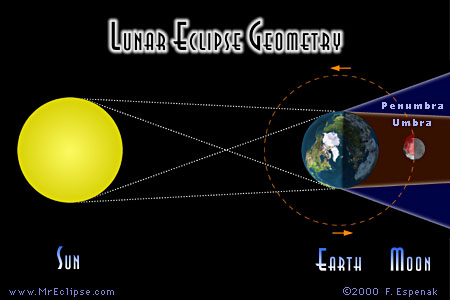 |
| Lunar Eclipse |
 |
| Solar Eclipse |
To begin telling you guys what the solar and lunar eclipses are, I'm going to tell you about what an eclipse is. An eclipse is an astronomical term in which an object in space is concealed by either blocking the view of an object or getting blocked by one.
Knowing that, solar eclipses occurs when the moon comes in between the Earth and the sun. The moon blocks the view of the star and conceals it. If the moon's orbit was completely circular, then we would have a solar eclipse every month. But since the moon's orbit is a little bit tilted, we rarely get solar eclipses. Solar eclipses can only be seen in some and not all parts of the world, because Earth is round. Solar eclipses last for about a few minutes because of the continuation of orbiting by the moon and the sun.
Lunar eclipses occur when the Earth is in the middle and the moon and sun are on opposite sides of each other. During lunar eclipses, the moon becomes a little bit dark since there is no sunlight shining on it. Lunar eclipses are rarer than solar eclipses because in order to have the lunar eclipses to occur, the moon has to be a full moon. Unlike solar eclipses, lunar eclipses last for a few hours. It can be seen from a lot of places on the globe at night.
 |
| Penumbra and umbra basically are some parts of shadows. |





